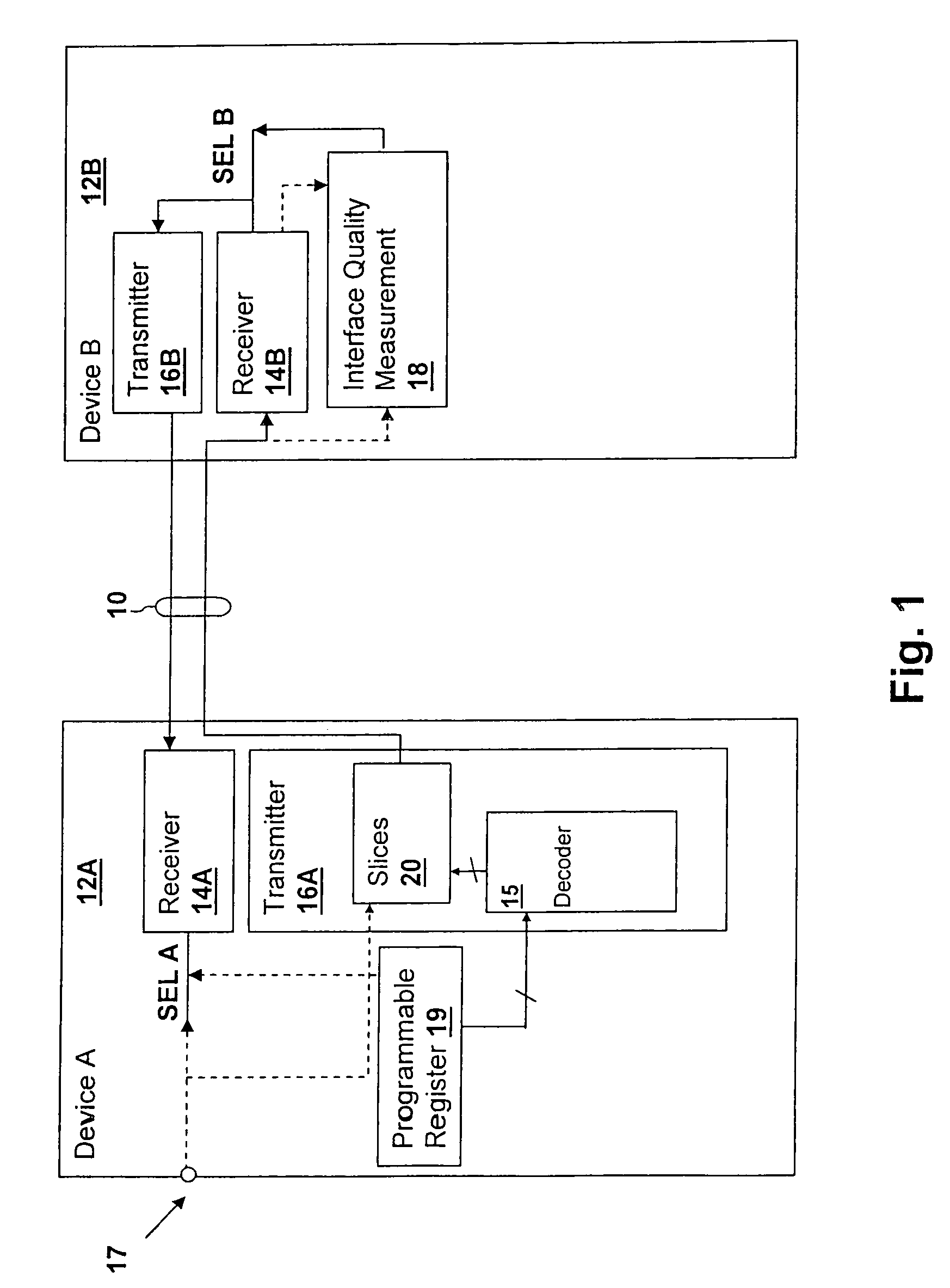Digital transmission circuit and method providing selectable power consumption via multiple weighted drive slices
a digital transmission and drive slice technology, applied in the field of communication link circuits, can solve the problems of increasing the operating frequency and complexity of the interface between present-day system devices and between circuits, affecting the reliability of the signal transmission system, and consuming relatively large amounts of power budget of the integrated circuit, so as to reduce the area and complexity of the transmitter circuit and reduce the amount of control logi
- Summary
- Abstract
- Description
- Claims
- Application Information
AI Technical Summary
Benefits of technology
Problems solved by technology
Method used
Image
Examples
Embodiment Construction
[0018]With reference now to the figures, and in particular with reference to FIG. 1, there is depicted a block diagram of transceivers 12A and 12B connected by an interface or channel 10 in accordance with an embodiment of the invention. Transceivers 12A, 12B may be located within a device such as a computer peripheral, a computer system, or within integrated circuits interconnected within a system. Interface 10 may be a single two wire bi-directional interface as depicted, or may be a full-duplex single wire interface or a bus having multiple transceivers in a half-duplex or full-duplex configuration. Transceivers 12A and 12B are connected to interface 10 each using a receiver 14A and 14B and a transmitter 16A and 16B, but the present invention is applicable to transmitters in general, and it should be understood that a transmitter in accordance with an embodiment of the invention may be incorporated in devices for connection to any of the above-specified types of interface 10, as ...
PUM
 Login to View More
Login to View More Abstract
Description
Claims
Application Information
 Login to View More
Login to View More - R&D
- Intellectual Property
- Life Sciences
- Materials
- Tech Scout
- Unparalleled Data Quality
- Higher Quality Content
- 60% Fewer Hallucinations
Browse by: Latest US Patents, China's latest patents, Technical Efficacy Thesaurus, Application Domain, Technology Topic, Popular Technical Reports.
© 2025 PatSnap. All rights reserved.Legal|Privacy policy|Modern Slavery Act Transparency Statement|Sitemap|About US| Contact US: help@patsnap.com



